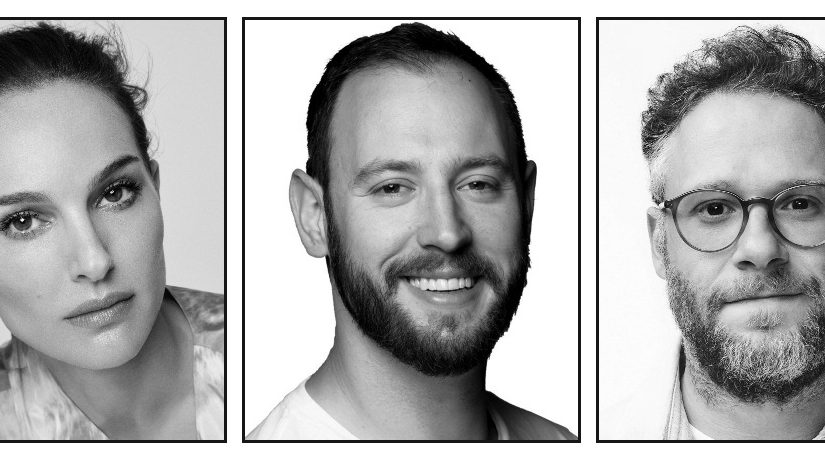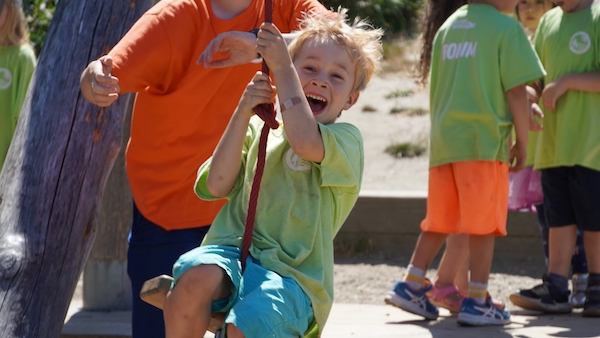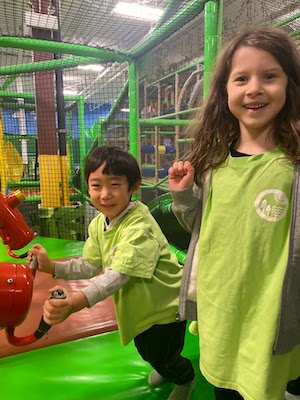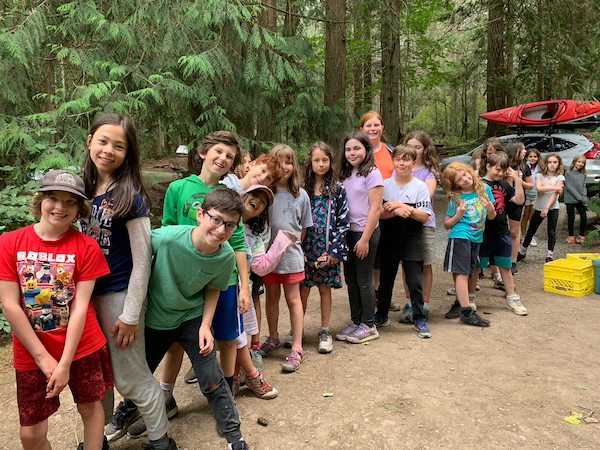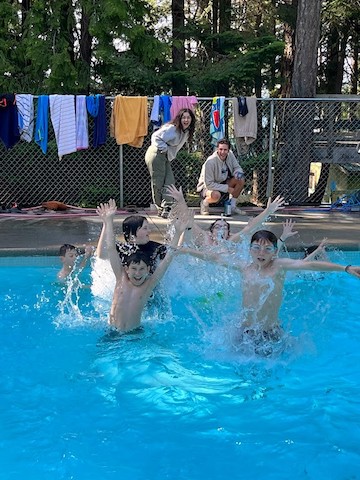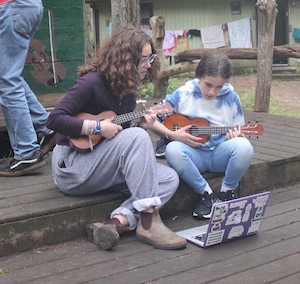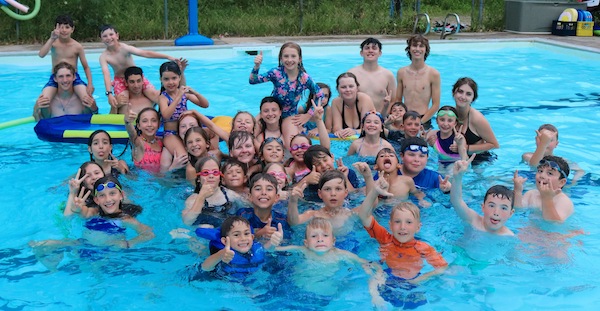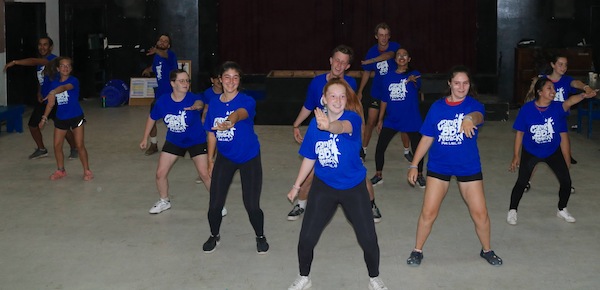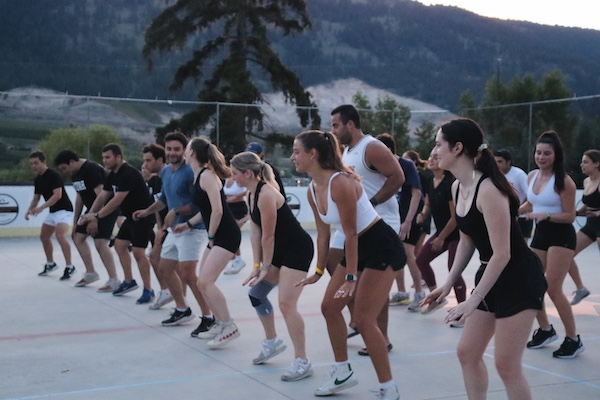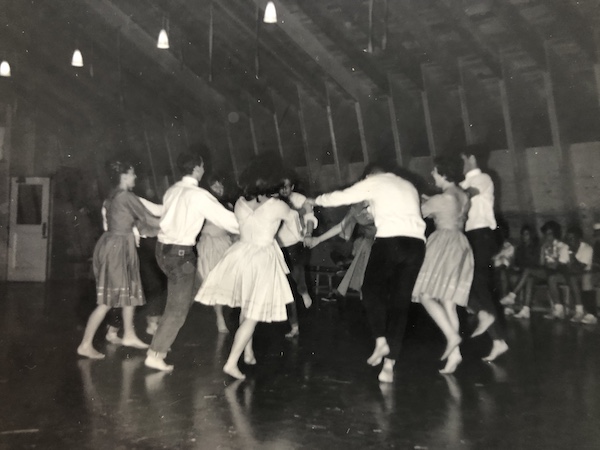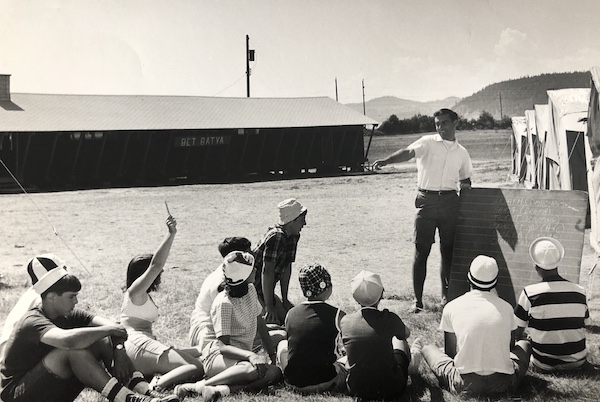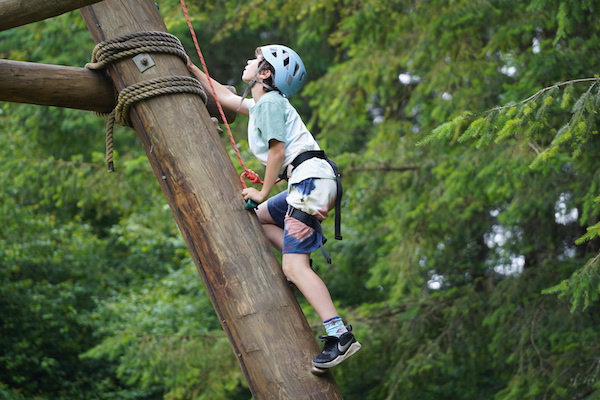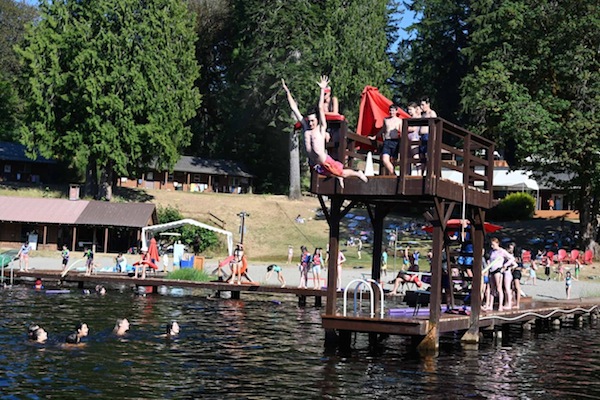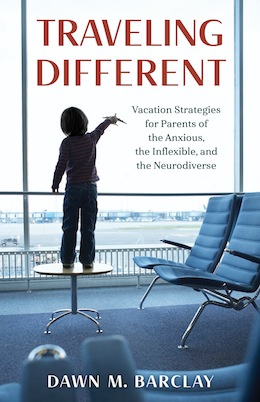Weekly vigils calling for the release of hostages held in Gaza continue weekly at the Vancouver Art Gallery.
On Nov. 26, the vigil spotlighted female victims of the atrocities and emphasized the hypocrisy of many groups, including UN Women, an entity ostensibly dedicated to gender equality and the empowerment of women, which took 50 days to express any concern about Israeli women.
The vigil took place a day after the United Nations International Day for the Elimination of Violence Against Women.
Rebeka Breder, a lawyer in Vancouver who specializes in animal law, addressed the assembled crowd. She reflected on how, as a child, she looked up to the United Nations as a humanitarian organization.
“Laughable, I know,” she said. “As I have come to learn, and as many of the people standing here have come to learn … the UN is a humanitarian organization – but not for Jewish people.”
The world seemingly cares about women’s rights, she said, except for Jewish women.
“Since Oct. 7, UN Women issued 26 statements about Palestinian women and children versus only three statements about Palestinian and Israelis together,” said Breder. “There is not one statement by UN Women that specifically condemns the brutal rape and mutilation of women’s bodies that was committed by Hamas. Not one. When we look at the photos that are posted by UN Women, most if not all of the pictures are about Palestinian women and children. I’m not saying we shouldn’t care. We should care about all life. But when you see UN Women that is an agency, that is supposed to be standing up and essentially representing women around the world, not post even one — not even one — picture of Oct. 7’s brutal attacks on women and [what] other Jewish people have gone through, it speaks volumes.”
Women’s rights groups and officials in Israel have been working to compile information and evidence about the brutality, rapes, mutilation and other atrocities committed by Hamas, Breder said.
“My understanding is that they have tried a number of times to send this information to UN Women so they can review it and, up until yesterday, there was silence, there was absolutely nothing coming from them,” she said.
Temple Sholom member Shirley Hyman, a board member of ARZA Canada, the voice of Reform Zionism in Canada, paid tribute to Vivian Silver, the Canadian-Israeli woman who was murdered Oct. 7 but who was not confirmed dead until Nov. 14.
“Vivian Silver was a proud Zionist,” said Hyman. “Vivian Silver spent the last four decades working to end the Israeli-Palestinian conflict while advocating for coexistence and harmony between both peoples. She was born in Winnipeg and, after a stint at Hebrew University in Jerusalem, in 1974, she moved to Israel and so began her life as an activist.”
Silver was a founder of Kibbutz Be’eri and oversaw construction projects, while shuttling back and forth to Gaza advancing coexistence.
“When Hamas took over the control of Gaza in 2007, everything changed,” Hyman said. “The closest she got to Gaza was the border, where she picked up sick Palestinians in order to take them to hospitals in Jerusalem.”
Disenchanted with the political left’s inability to end the conflict, Hyman said, Silver “turned to woman power.” She helped found the organization Women Wage Peace (Nashim Osot Shalom, in Hebrew).
“It has today grown to be the largest grassroots organization in Israel composed of both Israelis and Palestinians, numbering over 45,000 and located in 95 different areas,” Hyman said. “Every Monday, they protest at the Knesset, wearing white and turquoise so government officials can identify them. They host peace-building webinars, protests and marches around the country and conduct peace-building activities.”
On Oct. 4, days before she was murdered, Silver was with a group in Bethlehem, protesting at the security barrier in Bethlehem, many wearing T-shirts declaring “Peace is possible.”
Toby Rubin, president of CHW Vancouver, the local branch of the national organization founded as Canadian Hadassah-WIZO, stated, “Violence against women is never resistance.”
“It’s our duty to continue to speak for those who cannot,” she said. “But the silence has been deafening from the international women’s groups. Jewish women, Israeli women, our sisters, deserve the same respect, the same rights, and the same voice as women everywhere. Shame on the global community for deliberately ignoring them. Even if the UN came out yesterday, that was 50 days too late.”
The Canadian branch of the worldwide women’s Zionist organization has raised $2.5 million in emergency relief since Oct. 7, she said.
Rubin paid tribute to Daphna Kedem and others who have organized the weekly vigils since the terror attacks. Kedem read the names of all the child hostages. “Your dedication and your Zionism in helping this community never forget the faces,” she said. “We must never forget and we must continue to fight [until] every single one of the hostages is back.”
The previous week’s vigil, on Nov. 19, occurred a day before UN World Children’s Day. Volunteers stood on the steps of the Vancouver Art Gallery holding posters featuring the children murdered or being held hostage by Hamas.
Noemi Gal-Or, professor emerita of politics and international relations, said international law declares that a child should not be separated from their parents against their will. She called on Canada to redouble efforts to press Hamas to release all hostages.
Rabbi Shmulik Yeshayahu of the Ohel Ya’akov Community Kollel said the world should not accept that 40 children – including an infant born in captivity – are being held hostage.
“And the world is silent,” he said. “This is not acceptable. This is not the world that we envisioned. This is not a world that should be. We’ll do anything within their power to bring them home.”

